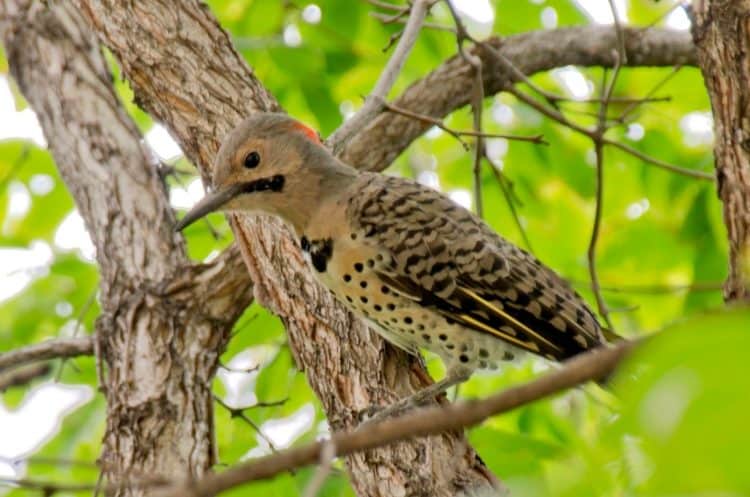This bird was too big and noisy to miss — about a foot long, and announcing its presence with repeated loud calls of kyeer as it eyeballed a little pile of raisins and peanut bits I had left on a fence post for the cardinals and robins. Although flickers eat mainly insects, they also take fruit and seeds, especially in winter.
The northern flicker is mainly brown and tan. Click to enlarge the photo and you will see the pretty pattern of bars, crescents and spots in its plumage. Note the red crescent on its nape. This one’s black mustache, or malar stripe, indicates that it is a male; females have plain tan faces.
See those yellow lines on the closed wing? The undersides of the wings are the same bright yellow and make a pretty flash of color when the bird flies; the bird is sometimes called a yellow-shafted flicker because of it.


Julie Feinstein
I am a Collection Manager at the American Museum of Natural History, an author, and a photographer. I live in New York City. I recently published my first popular science book, Field Guide to Urban Wildlife, an illustrated collection of natural history essays about common animals. I update my blog, Urban Wildlife Guide, every Sunday.



Leave a Reply